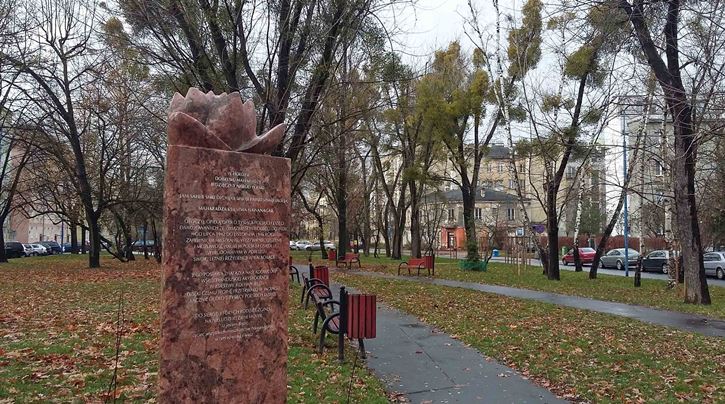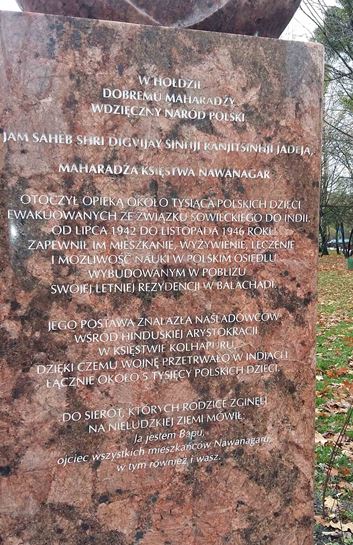
-
 Thank you for your method for mincing jalapeno peppers. I use it!
Przez:domowypatchwork 29Dec2020
Thank you for your method for mincing jalapeno peppers. I use it!
Przez:domowypatchwork 29Dec2020 -
 Thank you!
Przez:domowypatchwork 29Dec2020
Thank you!
Przez:domowypatchwork 29Dec2020 -
 Inka is our chickory coffee. I think that you can use any kind of coffee ...
Przez:domowypatchwork 29Dec2020
Inka is our chickory coffee. I think that you can use any kind of coffee ...
Przez:domowypatchwork 29Dec2020 -
 What a wonderful idea! I will make this with blackberry preserves, without the ...
Przez:Andrea 23Dec2020
What a wonderful idea! I will make this with blackberry preserves, without the ...
Przez:Andrea 23Dec2020 -
 This fish soup looks delicious!
I love soup.
Przez:Andrea 22Dec2020
This fish soup looks delicious!
I love soup.
Przez:Andrea 22Dec2020
Just a good man.
Events from the last couple of months and days have caused many people concerned with their own security to look at their neighbours with distance and suspicion. Making new acquaintances and friends in a carefree manner has probably gone forever. One by one holiday destinations are disappearing from the tourist map because they are not safe anymore. Soon we will start to pull every thought about travelling apart and we will suspect every passer-by of terrorism. However, the racial melting pot is a sign of our modern times. There are cities where it is difficult to tell who is an autochthonic resident and who is from a so-called minority group. In every religion, race and culture there are black sheep who sow unrest but there are also good people.
I would like to write today about just such a good man. A few years ago in 2012, the square between the two parts of Opaczewska street in Warsaw gained a patron: the maharaja Jam Saheb Digvijay Sinhji, heir to the Navangar principality in west India. In 2014, a monument to this man, designed by Mark Moderau, was unveiled there.
The year 1939 was the end of carefree childhood days for many children. Fear for personal safety and that of one's family and about acquiring the simple means of our existence became an integral part of life, even for the very young. Suddenly, our safe home had disappeared and in return children and their parents were sentenced to exile. Many who were repatriated in cattle trucks to the Soviet Union, Kazachstan and remote, inhospitable Siberia did not survive. Later on it was even worse. Children were separated from their beloved parents, who were sent to labor camps and kolkhozes. They faced terrible conditions in Soviet children's homes and were treated horribly. This is not the way childhood should be. In 1941 the Polish people were allowed to return to their country. The adults joined Anders' army and the children were helped by good people. One of the beautiful characters in those dramatic times was the Polish actress Hanka Ordonówna. Together with her husband Count Michał Tyszkiewicz, she helped to set up a Polish orphanage in Ashabad, close to the Iranian border, where all Polish war orphans were transported from all over the Soviet Union.
It was at this point that a good spirit appeared on the scene: a rich Indian aristocrat and friend of Ignacy Paderewski. This enlightened man, educated in Europe, one of two Indian delegates in Great Britain's war cabinet, was agitated by the tragic fate of so many children and decided to host them. Near his summer residence in Balachadi he built the Polish Children's Camp under the Polish white and red flag. All at once, the skinny, gaunt and sick children entered paradise. The maharaja helped them to recover, to return to a casual daily life at school among peers in a beautiful place far away from the hell that is war. The children used to call him Babu, which means "father", and I am convinced that even though many of them did not remember their parents, they did not have a problem with that. Apart from his own funds and efforts, the Maharaja convinced The Indian Prince's House to make a voluntary commitment to financing 500 Polish children until the end of the Second World War. Thanks to the selfless help of the good maharaja and people like him, around 5,000 Polish children survived the war. By the end of the Second World War, around 200 fosterlings were living in India. The contemporaneous Polish government required their return to Poland. Together with the other caregivers, Jam Saheb Digvijay Sinhji adopted them to prevent them from returning to communistic reality.
Asked by general Sikorski how Poland may return the favor for looking after thousands of homeless Polish children, he answered: " In the liberated Poland, give my name to one of Warsaw's streets"





